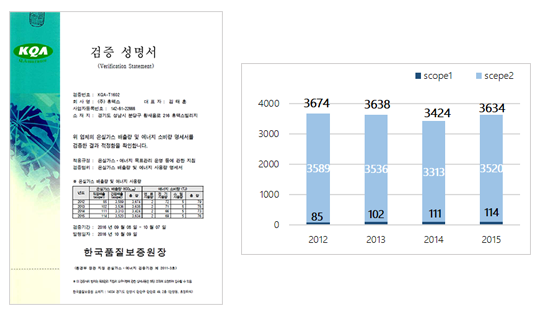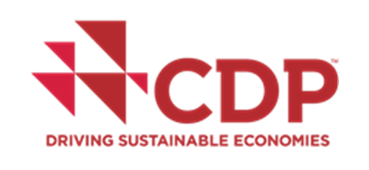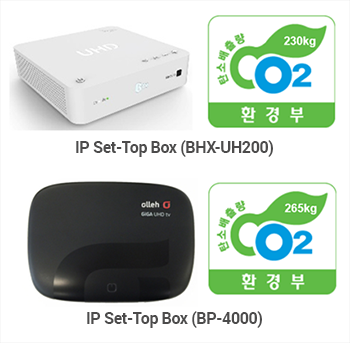Environmental Management
We are committed to eco-friendly management and continuously strive to reduce our environmental impact through sustainable and responsible practices.
Policy
Environmental Policy
HUMAX pursues environment-friendly management and is committed to :
- Construction and implement of Environmental Management System which enables HUMAX to minimize negatively affecting the environment across all process.
- Establishment of standards in compliance with environmental laws, regulations, and codes of practice.
- Continuous improvement of environment-friendly management skills.
- Reinforcement of environmental awareness through training and education.
- Production of environment-friendly products for efficient use of natural resources.
Climate Change Policy
HUMAX is dedicated to combating climate change through multi-disciplinary approach, including being responsible for regulations and customer needs. We will continue to develop new and more effective eco-friendly products and services to reduce greenhouse gas emissions. This is all part of HUMAX’s ongoing efforts to provide high value to our customers while contributing to the sustainability of the global environment.
HUMAX’s Partners understand that enforcing low-carbon and eco-friendly management policy are essential part of doing business with HUMAX. HUMAX’s Partners are to improve processes throughout the value chain network to reduce greenhouse gas emissions and provide HUMAX with greenhouse gas information.
Strategy
Humax environmental management systems is accredited to ISO 14001. We pursue eco-friendly management and declare that we take actions to improve the environment continuously to reduce the negative impact on the environment.
Eco-friendly Management
GHG Reduction
Energy Efficiency
Resource Efficiency
Environmental Management System based on ISO14001

Climate Change
To combat climate change, HUMAX has divided its greenhouse gas (GHG) emission reduction strategy into two focus areas: operations and products.
On the operations side, HUMAX has expanded the organizational boundaries for the GHG inventory, analyzed reduction activities, and set appropriate reduction targets.
Step 1.
Building & Verification of GHG Inventory
- Expand organizational boundaries
– Phase 1 : HPL, HBR (Company-owned plants)
– Phase 2 : EMS (Contracted plants)
– Phase 3 : Expand to overseas subsidiaries and offices - Secure expertise and credibility
Step 2.
Reduction Factors Analysis
- Analyze reduction activities
- Assess plant status: Diagnose energy processes and analyze reduction factors
- Benchmarking: Assess and secure reduction techniques
Step 3.
Reduction Targets Setting
- Select applicable reduction activities
- Set reduction targets
On the products side, HUMAX has conducted an accurate Life Cycle Assessment (LCA) of products and established a reduction strategy beginning with the high-emission raw materials/use stage.
Step 1.
Life Cycle Assessment (LCA)
- Define boundaries and calculate LCA
- Conduct and compare LCA by product category
- Analyze LCA results within the industry
Step 2.
Reduction Strategy for “Material & USE” Stages
- Material & End-of-life stages
– Change product structure through value-engineering (VE)
– Change materials including using recycled materials and low embodied carbon materials - Use stage
– Reduce standby power by updating SW
– Reduce power consumption by changing chip and redesigning PCB art work
Step 3.
Reduction Strategy for “All Lifecycle” Stages
- Other stages
– Distribution: Manage logistic service providers (LSP) via agency contracts
– Production: Build GHG inventory and adopt reduction activities - Minimize environmental impacts with eco-design
– Analyze carbon emissions during product design
– Embody eco-design in new product design (NPG) process
Performance
HUMAX has created its GHG inventory system at headquarters and obtained verification from a professional organization. In addition, HUMAX received the first set-top box carbon footprint labeling in Korea and intends to continue its efforts to develop eco-friendly products.
Greenhouse Gas (GHG) Inventory
Indentify the sources of directly and indirectly accumulated greenhouse gas emissions. Then assess and verify the greenhouse gas emissions according to international standards.

Carbon Disclosure Project (CDP)
HUMAX has been disclosing information related to climate change and greenhouse gas emissions to the Carbon Disclosure Project (CDP) since 2013. HUMAX has set its reduction targets to 2050, based on science-based targets.

Environmental Labels
Korean Carbon Footprint Labeling
Korean Carbon Footprint Labeling is a voluntary carbon footprint certification issued by Korea Environmental Industry & Technology Institute (KEITI), an affiliate of the Ministry of Environment. The labeling displays the effect on the environment (global warming) during a product’s life cycle.
For more detailed information, go to KEITI’s website. (http://www.epd.or.kr).
